Kenilworth is home to WNC's oldest public Black cemetery. Meet the men who saved it.
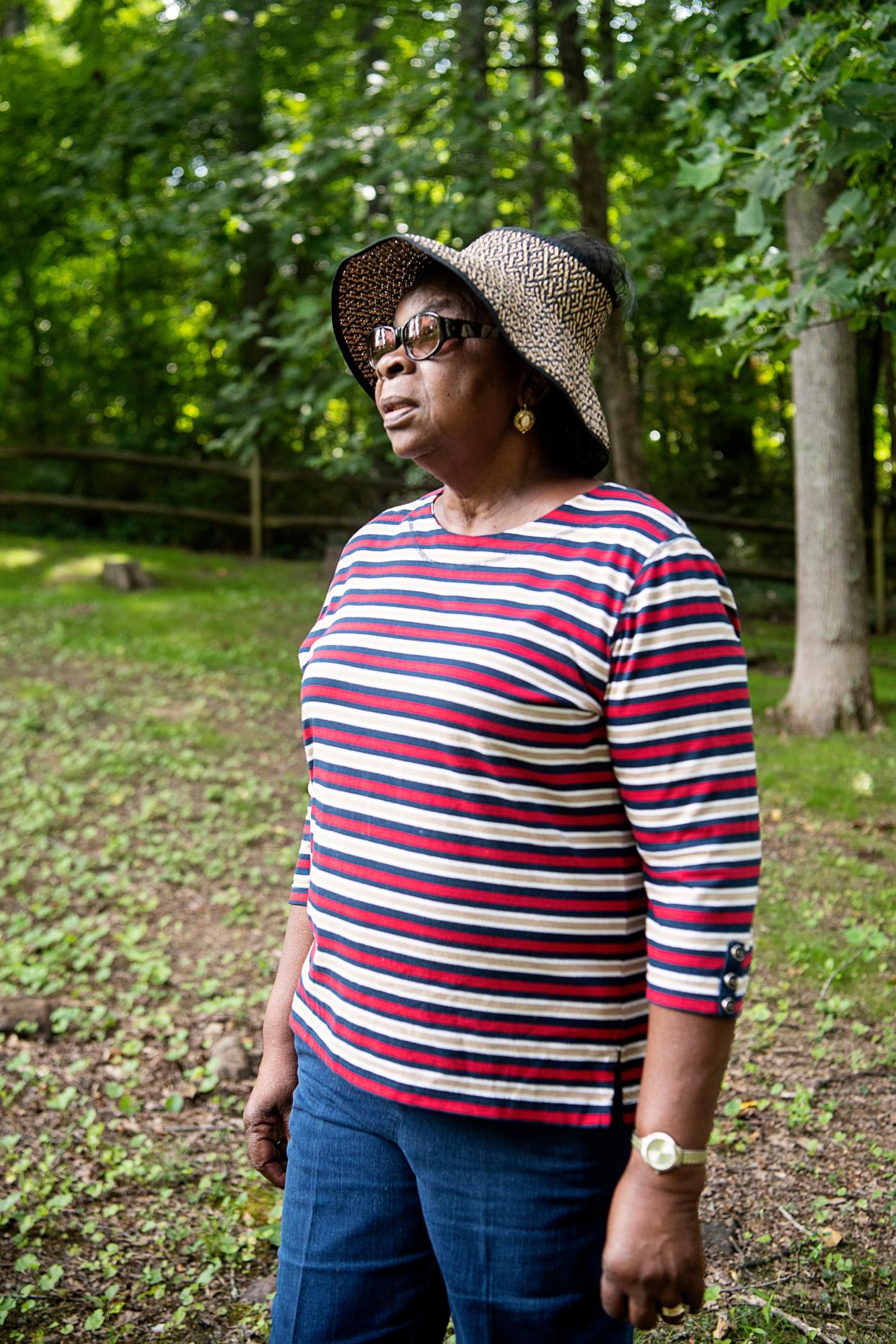
ASHEVILLE - Kudzu-choked and overgrown, Western North Carolina's oldest public African American cemetery was a veritable forest before George Gibson took matters into his own hands.
It was the mid-1980s when, armed with a pair of hedge clippers and a sleigh, Gibson began the task of uncovering the nearly 2-acre burial ground behind St. John "A" Baptist Church in Kenilworth, a rolling plot of land on the southeastern slopes of Beaucatcher Mountain.
After decades of toiling against time and nature, the loving caretakers, including Gibson, will soon be honored for their work in restoring the historic cemetery. The registration form that clinched the cemetery's place on the National Register of Historic Places names the site as the oldest burying ground for African Americans in the region, dating back to the mid-1800s.
Since its last burial in 1943, the cemetery had languished at the end of Dalton Street, largely forgotten. Walking into the cemetery in July, through a gap in the wooden fence — a recent addition from Warren Wilson College students and AmeriCorps teams — James Vaughn, treasurer on the board of the South Asheville Cemetery Association, cautions that there is nowhere you can step within the acreage of the cemetery without likely treading on someone's remains interred below the ground.
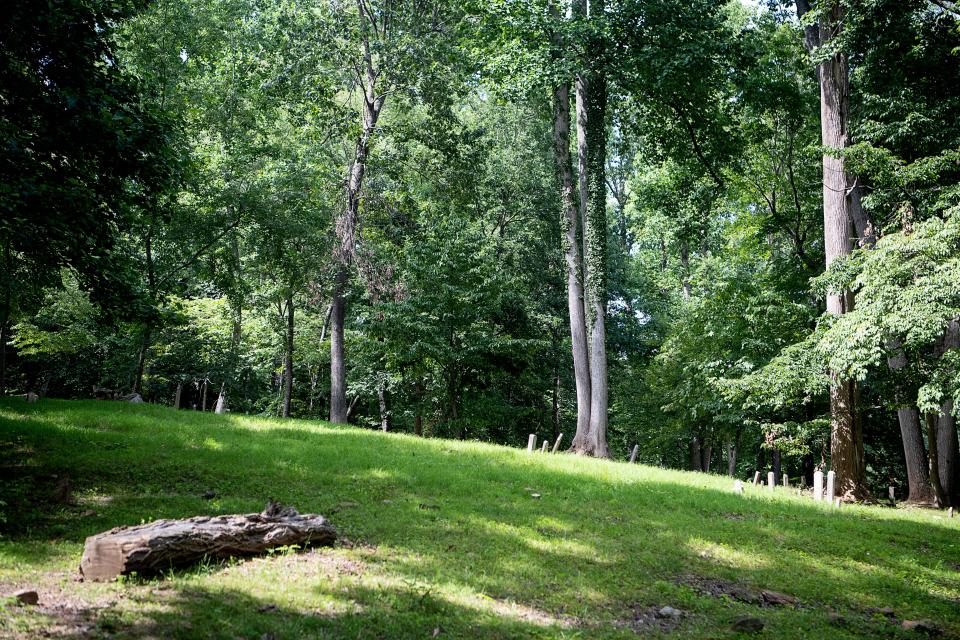
More: Digging deeper: Who was buried at a West Asheville lost cemetery?
“What stands out to me is the fact that it was so easily abandoned, and not by the people who were buried their or their families, but by the city and the community," Vaughn said of the plot. The cemetery began as a slave burial ground around the 1850s, and many of its occupants were enslaved or formerly enslaved, including its longtime caretaker, George Avery.
“It’s a sad story that is regionwide and not unique to South Asheville Cemetery,” Vaughn said of burial grounds becoming lost to time, often historically Black cemeteries like this one.
Though there are fewer than 100 headstones on the property, it is estimated that the cemetery contains more than 2,000 graves. Without markings, the only signifiers of hundreds of the gravesites are slight depressions in the earth, oriented east, toward the rising sun.
According to Gibson, Vaughn said, many people were buried in simple woven baskets or pine coffins that decayed, degraded and disintegrated overtime, leaving faint scars in the land above.
The cemetery would have been rendered nearly impenetrable by vegetation 40 years ago, Vaughn said, before the work of Gibson, a member of the neighboring church, who was later joined in the task of restoring the cemetery by his friend and another parishioner, George Taylor.
Gibson, Taylor and the cemetery's first steward, Avery, who began caring for the property in the mid-1800s until his death in 1938, will be honored with a "commemorative fixture" made possible by a $5,000 grant awarded from the city of Asheville in June, part of the third round of its neighborhood matching grants program.
Vaughn envisions a bronze plaque of Gibson and Taylor mounted in a boulder near the cemetery's entrance. He pointed to the neighboring land, where ivy, undergrowth, crowded trees and kudzu twined to form a dense thicket. That's what the cemetery looked like when Gibson and Taylor took on the task of clearing it, he said.
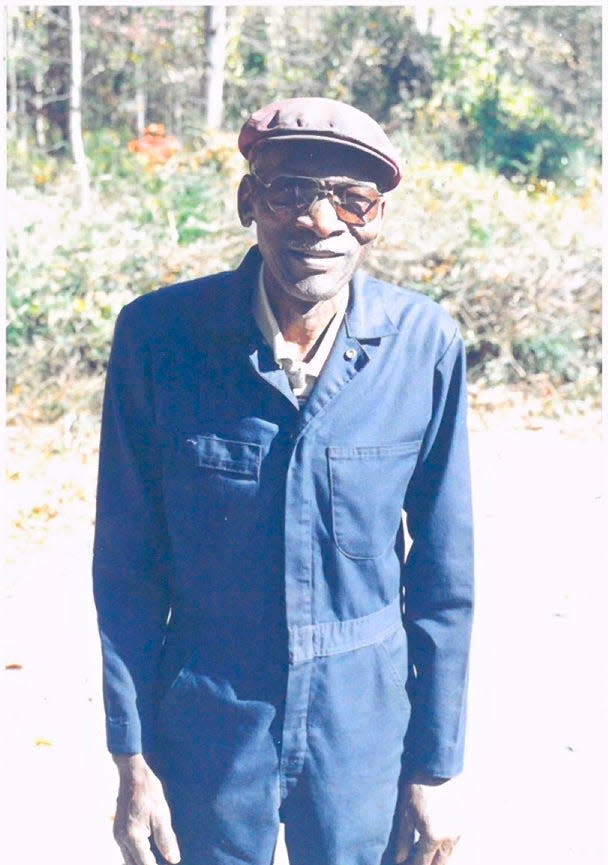
When they began, the work of several days would be undone with two weeks of new growth, fighting a "never-ending battle to try and recover it from the vegetation," Vaughn said.
Olivia Metz, Gibson's oldest daughter who has been instrumental in the restoration effort, lives in Kenilworth and sits on the South Asheville Cemetery Association board, as did Gibson, now an emeritus board member, remembered the cemetery as a "jungle."
Her father began his work after he retired. He had begun to lose his eyesight at that time, she said, and she would drive him to the church, often returning with lunch or picking up tools herself to work alongside him.
In years that came after, hundreds of people have volunteered at the cemetery, including countless students and staff from area colleges, with public attention drawn in part by a series of oral history recordings, now housed at the UNC Asheville special collections library.
"I've crawled on the ground, too. Rolled thorn and thickets" she said, laughing, standing alongside Vaughn in the sun-dappled bowery of the trees. Though, Metz added, she never managed to disturb a beehive, a dubious honor bestowed on several of the volunteers.
“It’s a very special place,” she said. She pointed along the far fence line, where infants were rumored to be buried, and examined a newly cleaned headstone, its surface white against the aged stone of its edge. "We’re so proud of what’s been done."
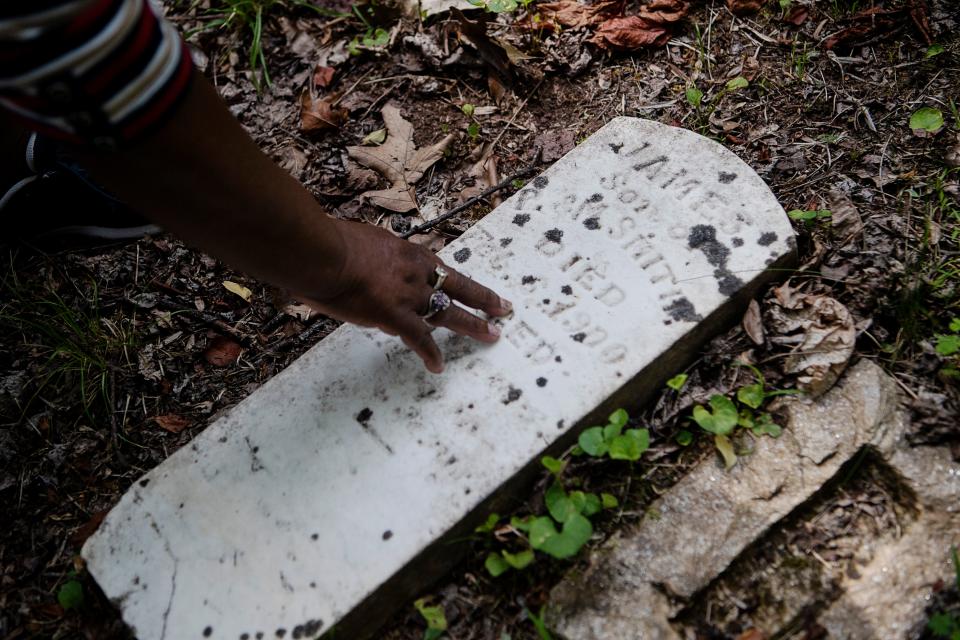
History of the cemetery
After efforts from Vaughn and the cemetery association, the burial ground and church were added to the National Register of Historic Places in 2021.
The narrative in the nomination form, prepared by Clay Griffith with Asheville-based Acme Preservation Services, said the cemetery was part of the historically Black neighborhood of South Asheville, which was once distinct from the predominantly white Kenilworth neighborhood, but has since been enveloped by the community.
It began as a mid-19th century burial ground for people enslaved by William and Sarah McDowell, who lived in the Smith-McDowell House, an 1840s brick mansion on Victoria Road, believed to be the oldest surviving structure in Asheville.
McDowell, a major in the Confederate army, entrusted Avery as the manager of the cemetery after the Civil War, according to the nomination form, where the cemetery served as a public burial ground, one of the few for African Americans in the region. Though it was allotted for church congregants, any Black community member could be buried at the cemetery for a "nominal fee."
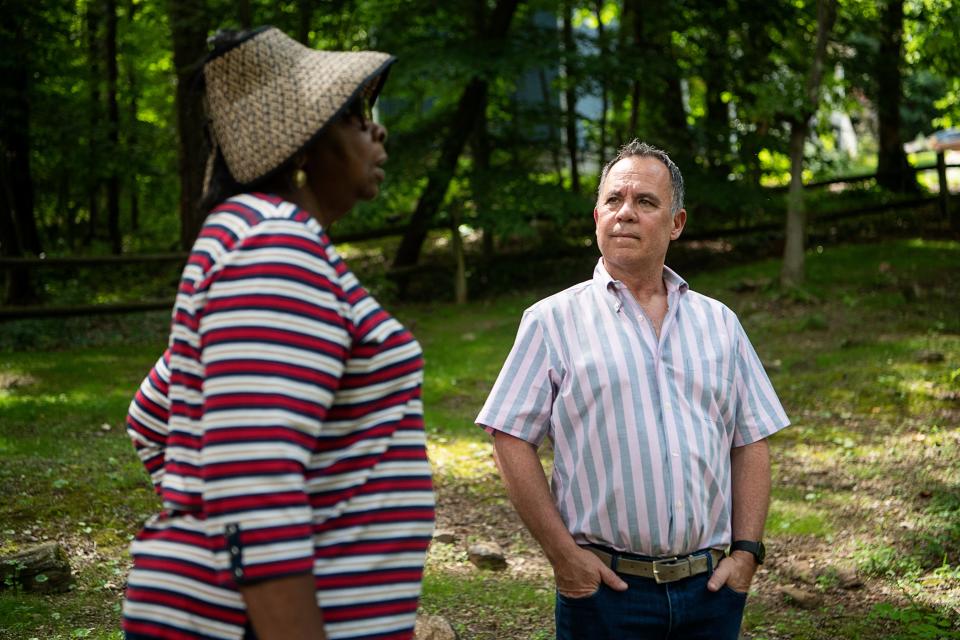
Gibson, now 95, attended a small school on the property, and as a boy was occasionally pulled out of class to carry bodies out for burial or help dig graves.
One of the few standing markers in the cemetery is Avery's, which came several months after his death, according to the narrative provided by Griffith.
A relatively plain slab, Avery's name is framed by a decorative inset shield along with his military unit from his service in the Union Army in Company D, 40th United States Colored Troops. His dates of death and birth (1844-1938) are not recorded on the headstone.
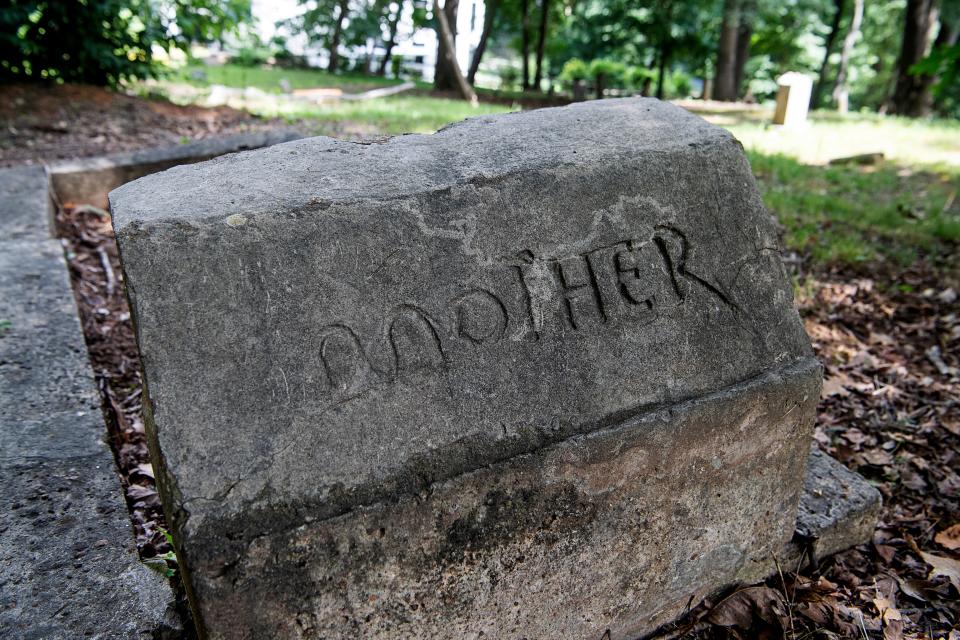
In the years of neglect, trees grew amid the gravestones, many of which have since been removed, and dozens of gravestones are crumbling, tilted or tipped upright. Fescue grass grows to discourage weeds, and sporadic plantings of daffodils near the fence line are among the early stages of continued beautification.
Unable to obtain a traditional headstone, one grave is marked by bricks covered in cement, "Mother" hand carved in the stone.
Honoring the 'three Georges'
The city's grant was applied for by the Kenilworth Neighborhood Association, in partnership with the South Asheville Cemetery Association.
Liana Hibbard, president of the association, said as a nonprofit, volunteer-led, donation-only neighborhood group, one of their primary focuses is supporting other committees and associations within the neighborhood. The idea of the commemorative fixture, intended to honor the "three Georges," with a focus on Gibson and Taylor, the latter of whom died in 2016, will assure their legacy will continue to inspire future civic engagement in the community, she said.
"I think this project will achieve that. Showing that these small projects can lead to large impacts in how a community knows itself, understands itself and then commits itself to future projects over time,” Hibbard said. “It wasn’t just one individual. It was three individuals over time that then inspired hundreds of volunteers, and thousands of hours of volunteer time to restore this cemetery.”
Vaughn said the cemetery association is now developing a 10-year strategic plan for the future care of the 2-acre parcel, including ongoing beautification, education efforts and site plans for the coming decade.
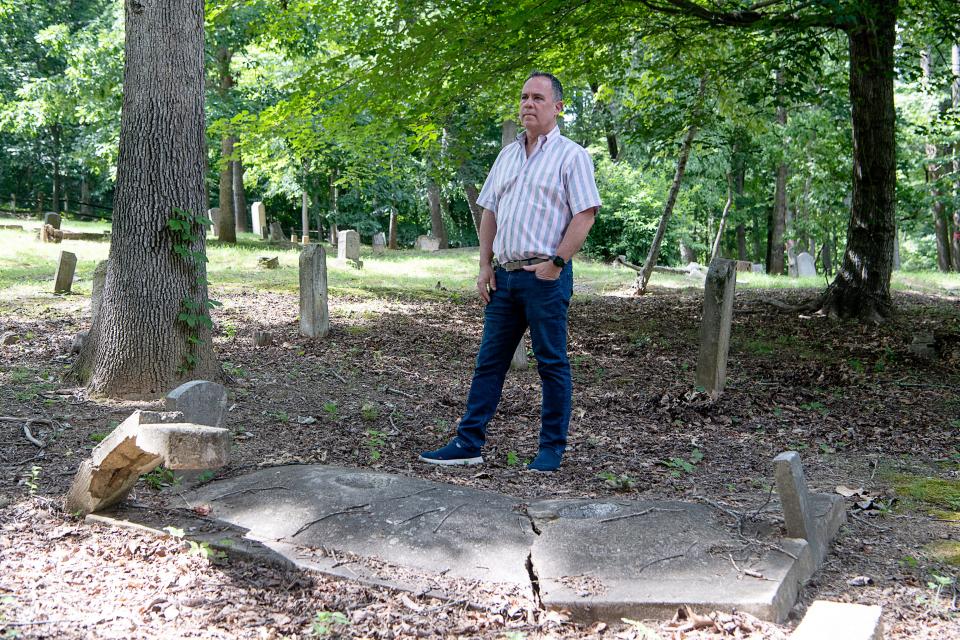
What does a neighborhood matching grant have the power to do?
The city's Neighborhood Matching Grants program helps neighborhood-based organizations fund various improvement projects with a dollar-for-dollar matching grant of up to $5,000. Criteria and more details can be found at ashevillenc.gov/department/communication-public-engagement/neighborhood-services/neighborhood-matching-grants/.
In the most recent round of grant awards, the city awarded $62,750 to 13 neighborhood organizations. The program has provided $159,110 in matching grants since 2021.
“These grants have helped empower neighborhoods to come together and decide what they want to see in their community,” said Meredith Friedheim, Neighborhood Services Specialist, in a June 29 city news release. “Whether that’s adding something new to a public space, putting on an event, or honoring their neighborhood history, it’s exciting to see folks accomplish things they’re proud of.”
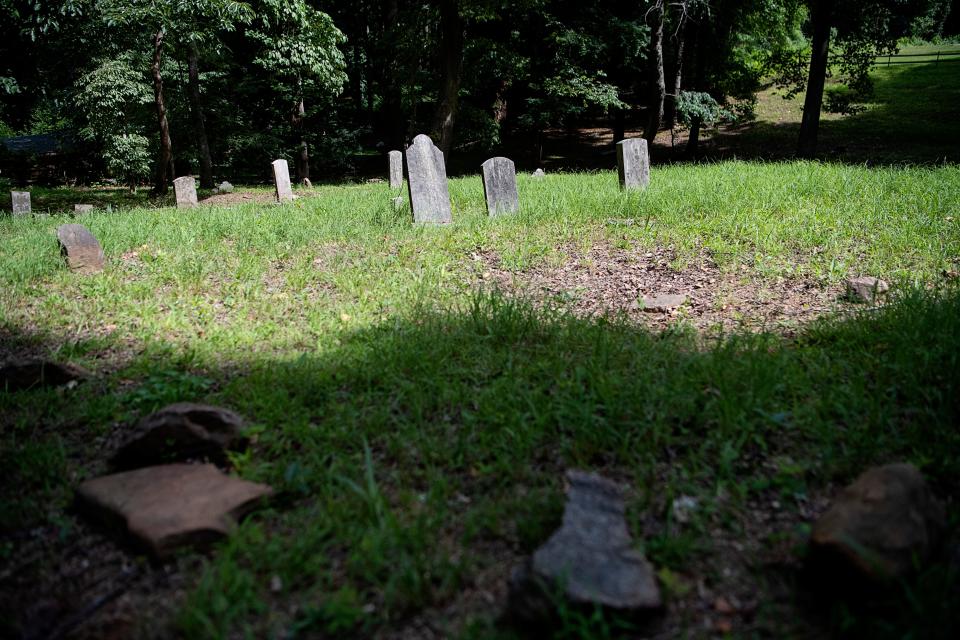
Hibbard echoed the impact of the grants.
"These funds help us get started on our projects, and then also create realistic funding goals when we reach out to the community to raise funds," she said. "There is a lot of power in a matching grant.”
The other 2023 matching grant recipients are:
Shiloh to implement programming and establish a historic pathway in the neighborhood community garden – $5,000.
Malvern Hills to improve a portion of the Hominy Creek Greenway in partnership with Friends of the Hominy Creek Greenway – $5,000.
Southside to initiate a “Southside Coming Home Reunion” event inviting Black legacy neighborhood members to celebrate the present and future and share stories of the past – $5,000.
The Block to hold a series of “the block party” events bringing the local community together in South Market and Eagle streets – $5,000.
Kenilworth Forest to install signage, tree maintenance and plant pollinator-friendly perennials in a neighborhood park (second phase of project funded in Round 2) – $4,250.
Beaverdam Valley to create a neighborhood strategic work plan – $5,000.
Lake View Park to conduct tree canopy preservation and removal of invasive species around Beaver Lake and along the Avon and Euclid parkways – $5,000.
Haw Creek to install a trailhead kiosk in Masters Park at a trail connecting the neighborhood to the Blue Ridge Parkway and Mountains-To-Sea Trail – $5,000.
Burton Street to implement multifaceted neighborhood programming and events with a focus on racial equity and multigenerational inclusivity (second phase of project funded in Round 1) – $5,000.
Coalition of Asheville Neighborhoods to expand and update communications efforts – $5,000.
South French Broad to implement community building events and build a neighborhood website – $3,500.
Grace to construct Candace Pickens Playground – $5,000.
Sarah Honosky is the city government reporter for the Asheville Citizen Times, part of the USA TODAY Network. News Tips? Email shonosky@citizentimes.com or message on Twitter at @slhonosky. Please support local, daily journalism with a subscription to the Citizen Times.
This article originally appeared on Asheville Citizen Times: Asheville oldest African American cemetery caretaker to be honored

